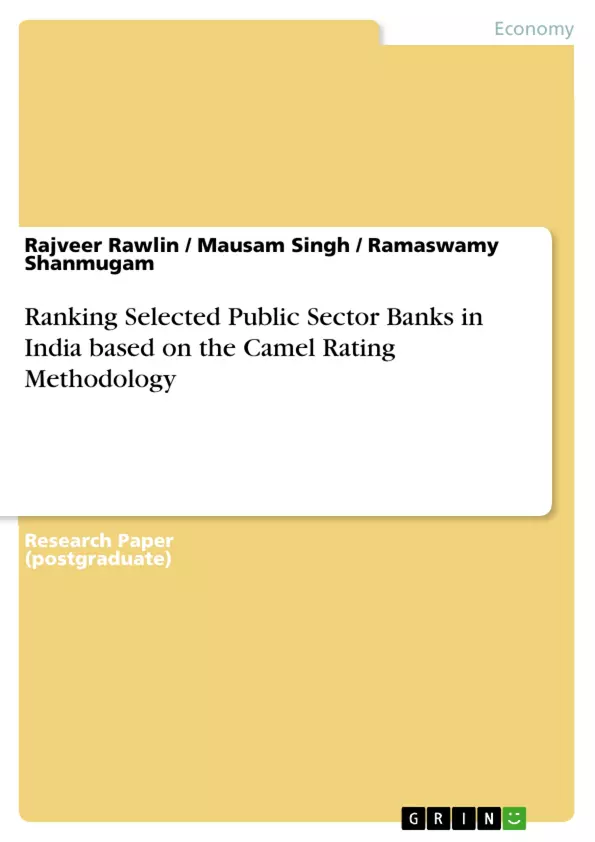The CAMEL rating is a well established technique to compare the performance of banks and financial institutions. We compare a sample of five public sector banks in India, ranking them via the CAMEL rating. Of the banks chosen for the study SBI ranked first in capital adequacy, asset quality and earnings quality. IDBI ranked first in management efficiency while BOB ranked first in liquidity. The bank with the best overall CAMEL rank proved to be SBI. By providing a basis of comparison for different banks the CAMEL rating can yield valuable insight to several stake holders of banks such as bank management, investors and regulators.
Inhaltsverzeichnis (Table of Contents)
- Introduction
- Literature review
- Methodology
- Results
- Discussion and Analysis
- Conclusion
- Limitations
- References
Zielsetzung und Themenschwerpunkte (Objectives and Key Themes)
This study aims to provide a comparative analysis of five major public sector banks in India using the internationally recognized CAMEL rating methodology. The objective is to understand the relative strengths and weaknesses of these banks based on various financial parameters, including capital adequacy, asset quality, management efficiency, earnings quality, and liquidity. The study also aims to assess the correlation between CAMEL parameters and the banks' share price performance.
- CAMEL rating methodology for Indian public sector banks
- Comparative analysis of financial performance across different banks
- Relationship between CAMEL parameters and share price performance
- Assessment of the impact of recent economic trends on banking performance
- Implications for stakeholders such as bank management, investors, and regulators
Zusammenfassung der Kapitel (Chapter Summaries)
- Introduction: This chapter provides an overview of the Indian banking sector, highlighting the challenges posed by Non-Performing Assets (NPAs) and the need for a comprehensive evaluation of bank performance. The CAMEL rating system is introduced as a suitable framework for this analysis.
- Literature Review: This section explores existing research on the application of the CAMEL rating methodology in the Indian banking context. It summarizes previous studies that have utilized this approach to assess the financial performance of various banks in India.
- Methodology: This chapter details the methodology employed in the study, including the selection of banks, the specific CAMEL parameters used, and the data sources. The study focuses on a five-year period (2012-2016) and analyzes the trend in each parameter over this timeframe.
- Results: This chapter presents the key findings of the study, including the ranking of the five banks based on individual CAMEL parameters and the overall CAMEL score. It also provides tables and figures illustrating the performance of each bank across different financial metrics.
Schlüsselwörter (Keywords)
This study focuses on the application of the CAMEL rating methodology to assess the performance of selected public sector banks in India. Key concepts and themes explored include: CAMEL rating, capital adequacy, asset quality, management efficiency, earnings quality, liquidity, Non-Performing Assets (NPAs), banking sector performance, and share price performance.
- Citar trabajo
- Rajveer Rawlin (Autor), Mausam Singh (Autor), Dr. Ramaswamy Shanmugam (Autor), 2017, Ranking Selected Public Sector Banks in India based on the Camel Rating Methodology, Múnich, GRIN Verlag, https://www.grin.com/document/367088



